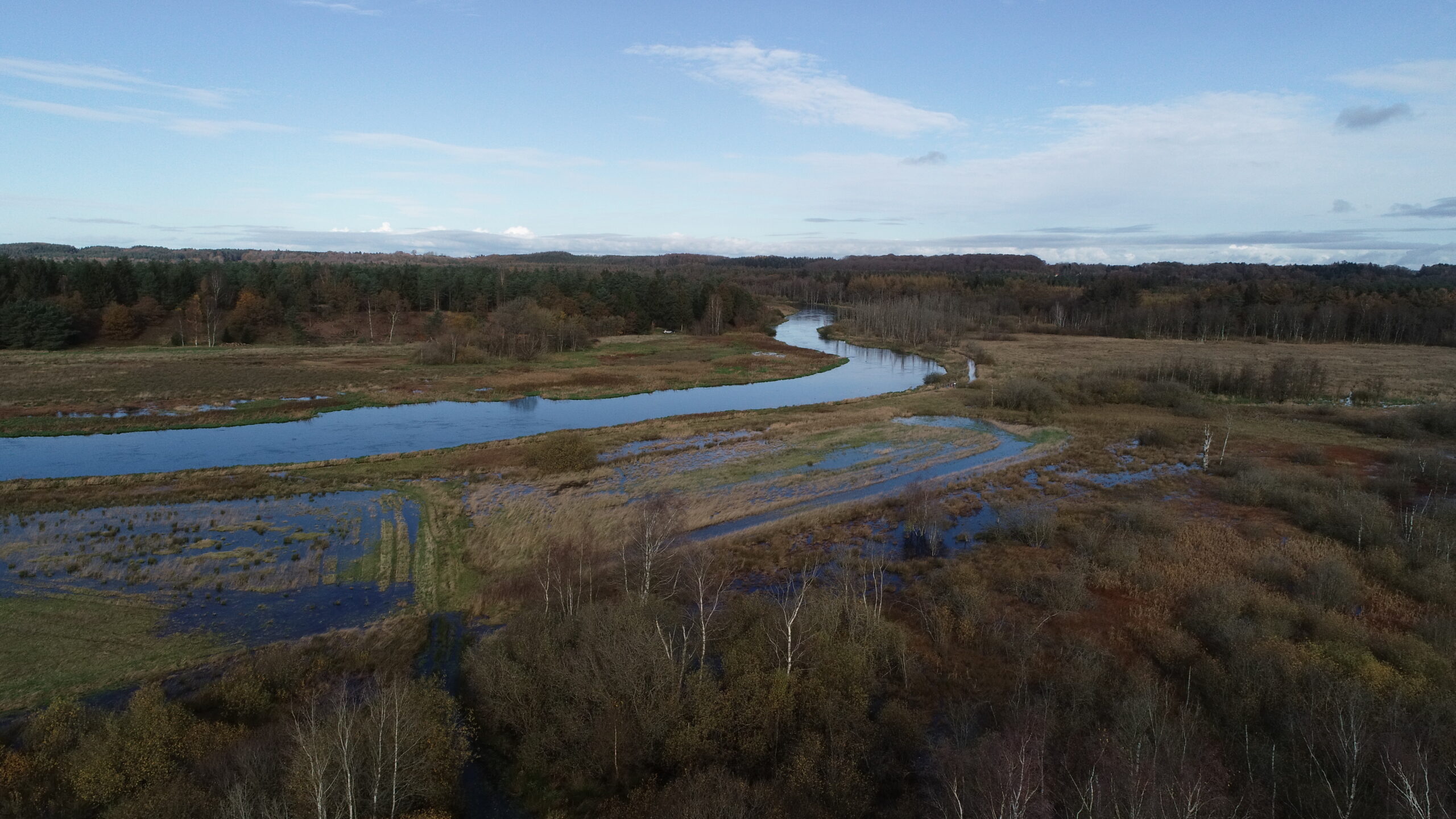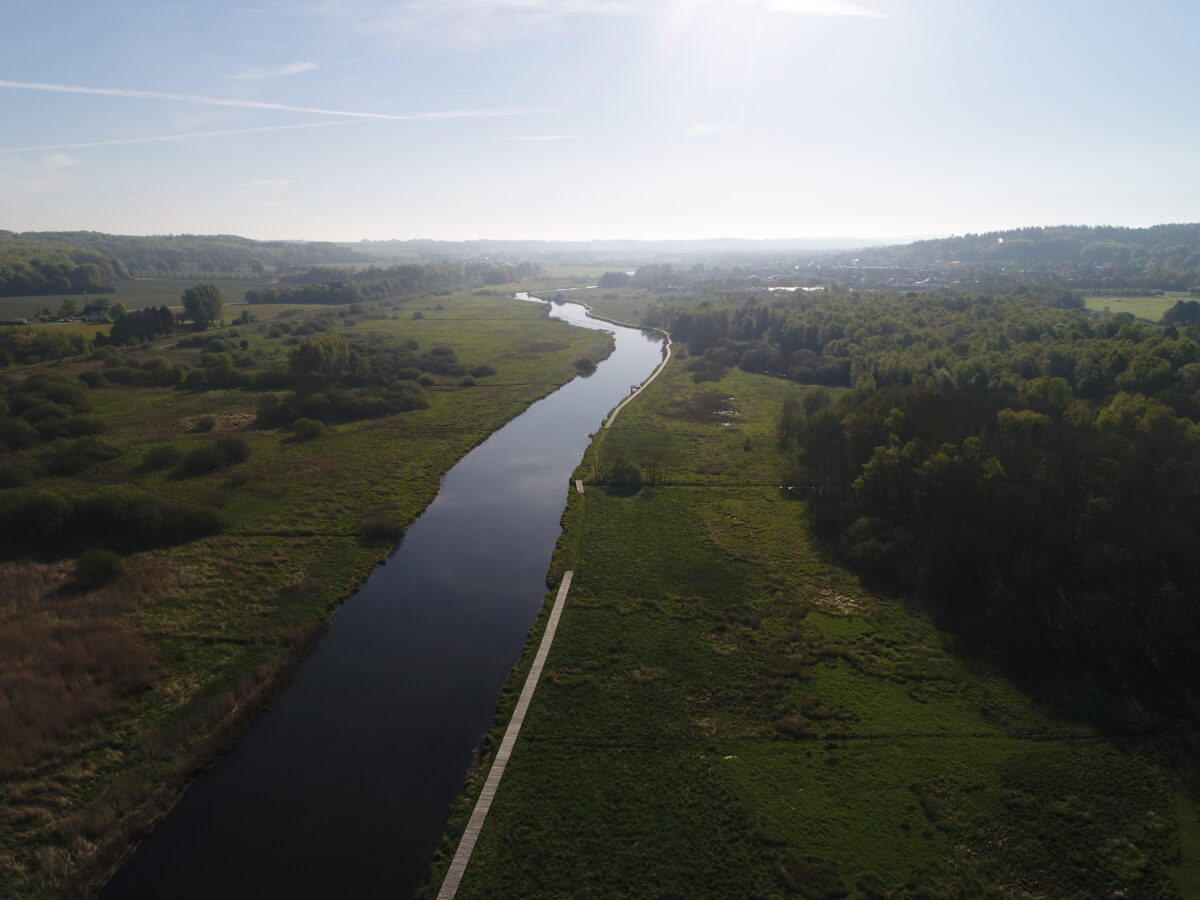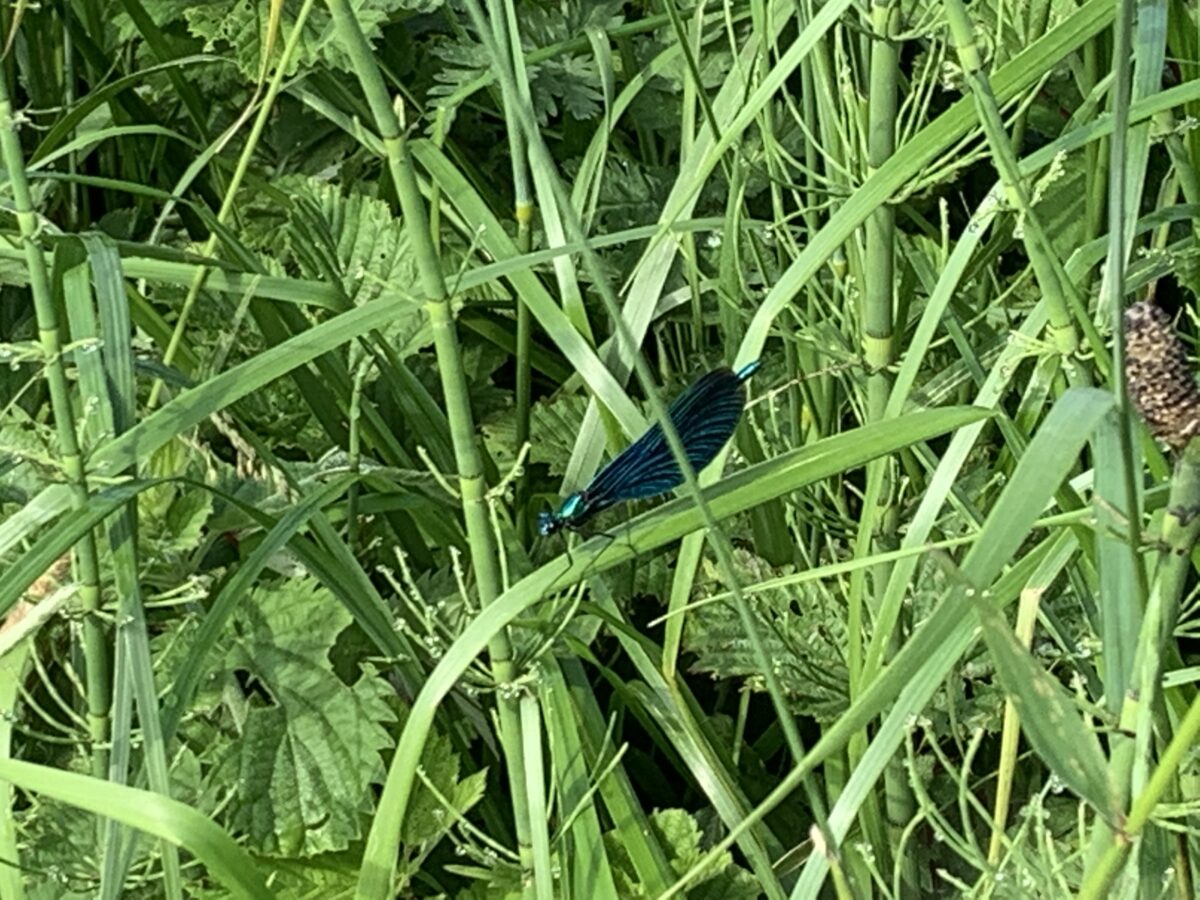
Landscape
Gudenådalen is Denmark’s longest meltwater valley. When the ice during the last ice age around 18,000 years ago began to retreat eastward from the main ice sheet, the meltwater no longer flowed westward across the moorlands of Central Jutland but found its way northward through Gudenådalen.
The meltwater rivers eroded the sides of the river valley and deposited at the bottom, and the “terraces” found in Gudenådalen on both sides of Gudenåen reflect earlier phases of melting. The terraces are the former river bottoms that Gudenåen has cut deeper and deeper into as the ice melted away and new drainage opportunities arose. They can be very large and lie 20-30 meters above the current Gudenå.
The terrace levels can be seen in several places along Gudenåen, for example in the valley sides between Silkeborg and Svostrup, south of Kongensbro, north of Tange Sø, where in addition to several terraces you can see traces of dead ice, and between Bjerringbro and Langå, where the railway lies on the youngest terrace, and between Langå and Randers, where Nørreåen joins the large drainage canal system. South of Randers, there are also traces of the Stone Age sea, which after the Ice Age penetrated all the way to Langå and created the flat meadows we see today.

Nature
Gudenåen is home to more than 80 plant species, 44 of which are aquatic plant species – including water lilies and certain species of wateraxe that are unique in a European context. The cold springs contain small animals that are otherwise only known from mountain streams.
Much of the Gudenå’s original river delta has been drained, but on the stretch between Randers city and Fladbro, the remains of the delta can still be experienced. There are tributaries and marshy areas overgrown with reed beds, willows and aquatic plants.
Gudenåen’s fish population is very rich in species, including salmon, trout, eel, grayling, bream, roach, pike, perch, lamprey, smelt and more. Sea trout and grayling spawn, and previously so did salmon. In Randers Fjord, there are species that are adapted to fluctuations in salinity.
Kingfisher, water starling and wagtail are some of the most characteristic waterfowl. The last two only breed in running water.
Among the insects, we must highlight the beautiful water nymph and the more rare green dragonfly, veil wings, which live nowhere else in Denmark than at Gudenåengene south of Randers.
You also need to be lucky if you want to see otters.




